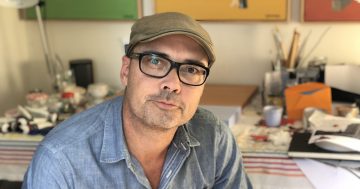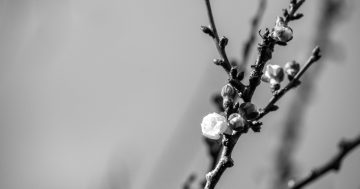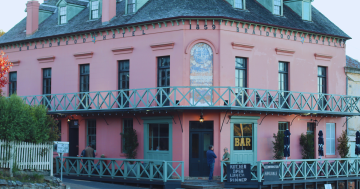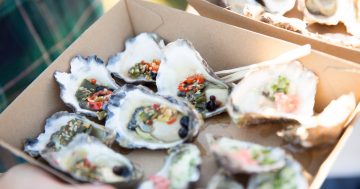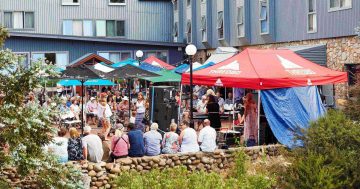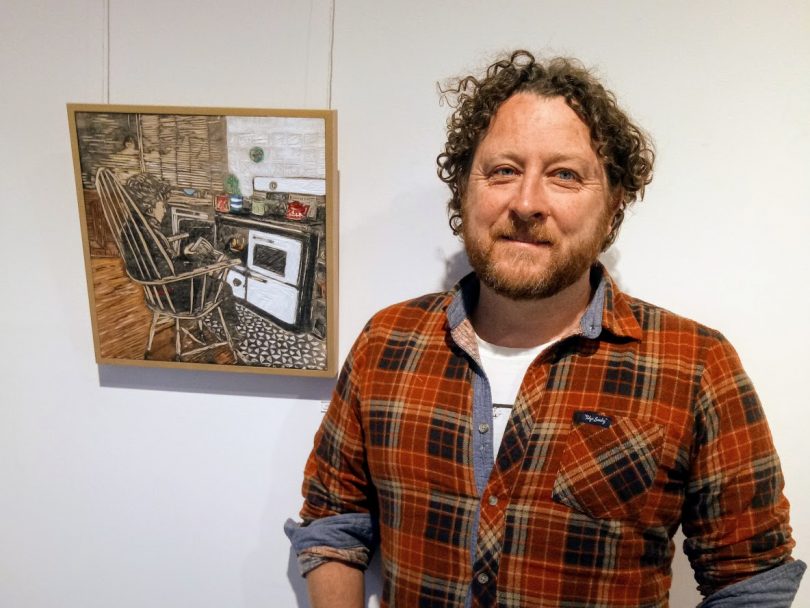
Julian Laffan with one of his framed and painted woodcuts. Images: Supplied.
Julian Laffan is a Braidwood schoolteacher. He is also a collector, traveller and historic home renovator. And he is an artist. Laffan trained in printmaking at the Canberra School of Art and came away with a love of wood cut printing. But these days he doesn’t make any prints at all, preferring to colour in the carved woodblock, and display that as the finished and framed artwork.

‘Shelf Life’ depicts the vintage kitchen cannisters in artist Julian Laffan’s everyday kitchen.
“Printmakers think I am mad,” he says. “Why wouldn’t you print from the block and make many, many artworks to sell, instead of just one piece?” For Laffan, the textured and coloured woodblock is the artwork. The Individual blocks have a permanence that he appreciates and are carefully framed as artworks.

‘Lucinda at the table’ was the first piece made for this exhibition
His current exhibition Illuminated Artefacts at Beaver Galleries is highly personal, a collection of moments and scenes of family life inside his own home at Braidwood. This is quite a departure from the last few years, where he carved scenes from his travels to New York, Indonesia and Paris.
“These current works are more inward-looking,” he says “but they are still a meditation on a moment in time.”

Julian Laffan ‘Chinese scholar’, woodcut on birch ply, gouache, oil, pencil, 34.5 x 34.5cm
Many of the warm domestic scenes in this exhibition appear as soft memories of days gone by, featuring antique scone trays and lacquered Chinese furniture. But actually they depict moments from the last five months in Julian Laffan’s family life. His historic home from 1860 features a wood stove and a groovy set of 1950s coffee and tea canisters. “We use those every day,” he says. “That image of the pots on the stove is a real moment in time. Nothing is arranged, they were just sitting there like that. I was just about to cut up that onion.”
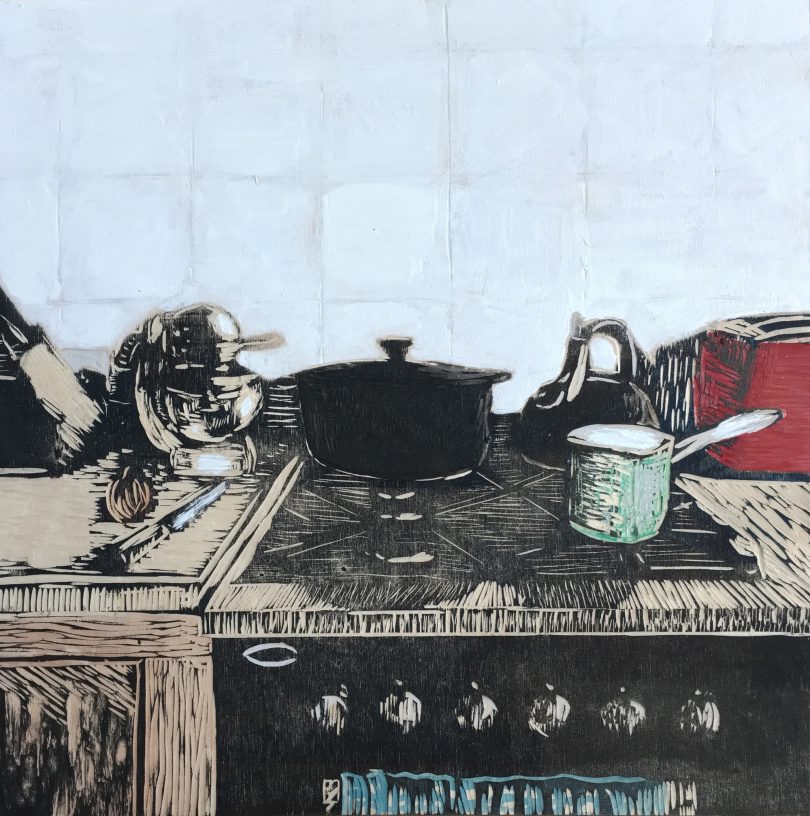
‘Kitchen companions’ shows an onion waiting to go in the pot on the stove
Walking with Laffan through the show is like looking through a personal photo album. “That’s my workshop,” he says. “Here is my attic studio, there is the kitchen table I made myself, look at this little bottle from Morocco on the bedside table.”
Laffan collects interesting objects from his overseas travels and from op shops in Canberra and Braidwood. Parts of his collection features in the current exhibition images. Some of the woodcut images look like carefully styled scenes, but they are all represented as they were found on the day. “Of course, at some point we did choose to put those objects on the mantlepiece, or on the stove, but nothing was arranged for the image. I take a photograph or drawing as I see the moment, and work from that.”

‘Interiority’ shows the artist’s own mantlepiece including a previous woodcut of Paris
Living in Braidwood works well for the Laffan family. “We could have stayed in Canberra, where I had a studio at Gorman House but by going to Braidwood we could get a larger home, with room for studios and home offices.” That said, the 1860s property was in serious disrepair and is still undergoing renovation.
Julian Laffan’s attic art studio is full of art materials that would be quite at home in the 1800s as well. Birchwood blocks, chisels for carving, pencils and gouache paint for colouring were all commonplace several centuries ago. But Laffan’s use of the woodblock as the base of a painted artwork is quite different. He is in effect drawing with a chisel, adding a few pencil touches and some soft paint colours to create quiet scenes of daily life that we can all recognise.
“This exhibition is all about moments in time and honest, authentic moments,” he says.
Visit his website for more information.
Illuminated artefacts exhibition
Beaver Galleries, 81 Denison Street Deakin
30 May – 16 June 2019
Original Article published by Cass Proudfoot on The RiotACT.







